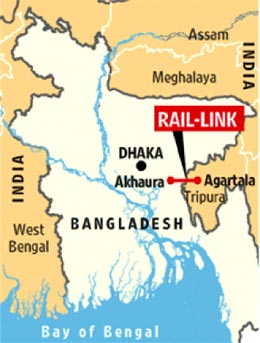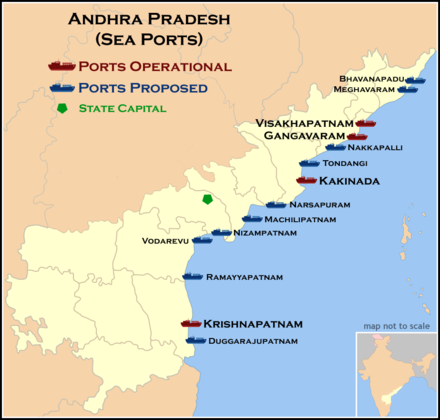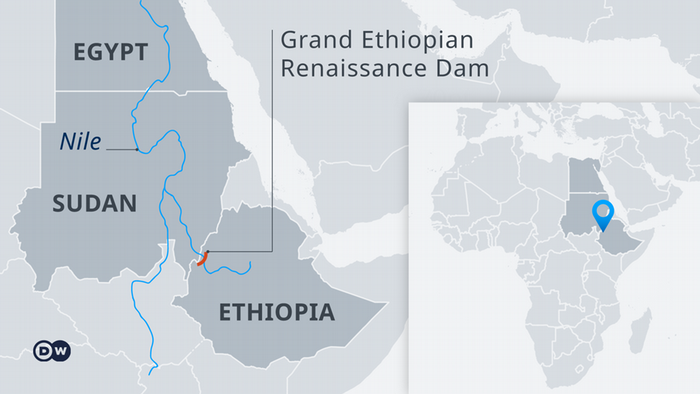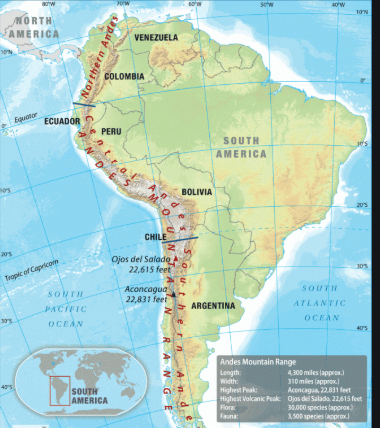Reservations in Promotion is Not a Fundamental Right: SC
Why in News
The Supreme Court has recently ruled that the states are not bound to provide reservation in appointments and promotions and that there is no fundamental right to reservation in promotions.
Related Constitutional Provisions about Reservation
- Article 16(4) empowers the state to make any provision for the reservation of appointments or posts in favour of any backward class of citizens which, in the opinion of the state, is not adequately represented in the services under the state.
- By way of the 77th Amendment Act, a new clause (4A) was added to Article 16, empowering the state to make provisions for reservation in matters of promotion to Scheduled Caste/Scheduled Tribe employees if the state feels they are not adequately represented in services.
Key Points from the Ruling
- Article 16 (4) and 16 (4A) of the Constitution are in the nature of enabling provisions, vesting a discretion on the state government to consider providing reservation, if the circumstances so warrant.
- The state government cannot be directed to provide reservation for appointment in public posts. Similarly, the state is not bound to make reservations for Scheduled Castes and Scheduled Tribes in matters of promotions.
- Articles 16 (4) and 16 (4-A) of the Constitution did not confer individuals with a fundamental right to claim reservations in promotion.
- The Articles empower the State to make reservations in matters of appointment and promotion in favour of the Scheduled Castes and Scheduled Tribes only “if in the opinion of the State they are not adequately represented in the services of the State”.
- Thus, the State government has discretion “to consider providing reservations, if the circumstances so warrant”.
- However, if a State wishes to exercise its discretion and make reservation in promotions, it has to first collect quantifiable data showing inadequacy of representation of a class or community in public services.
- Subject to Judicial Review
- If the decision of the state government to provide SC/ST reservation in promotion to a particular public post is challenged, it would have to place the data and prove before the court that reservation was necessary and does not affect the efficiency of administration.
Poor Compensation Rate for Trafficking Survivors
Why in News
Based on the data of the NCRB, a non-profit organisation released a report on compensation awarded to survivors of trafficking the country, which highlighted the poor status of compensation awarded during 2011- 2019.
- NCRB reports put the total number of cases of human trafficking at 35,983, but only 82 (0.2%) victims were awarded compensation.
Key Points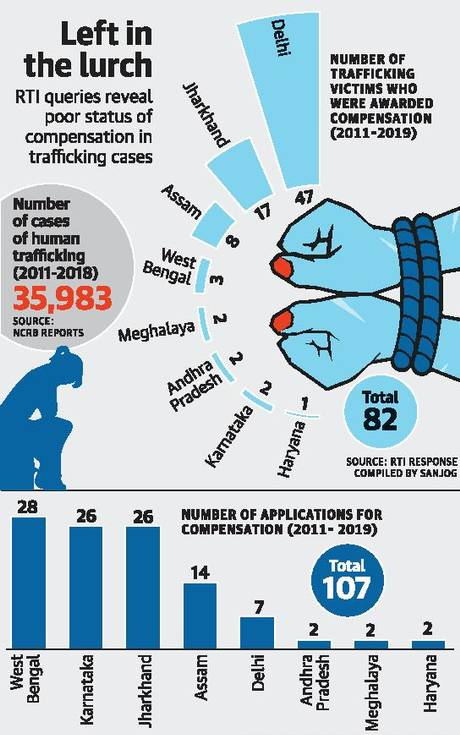
- The report titled ‘UNCOMPENSATE VICTIMS’ was released by Sanjog, a technical resource organisation that works to combat trafficking and gender-based violence.
- Following the national outrage over the Nirbhaya gang-rape case (2012), the government had announced ₹1,000 crore fund to be used to combat sexual violence against persons – children or adults.
- The amount of compensation to victims of trafficking varied from State to State, hence the Supreme Court had directed the National Legal Services Authority (NALSA) to frame a standardised victim compensation scheme.
- The study also reflects the number of trafficking survivors who applied for the victim compensation scheme to their respective legal services authority.
- While 107 individuals applied under the scheme, in 102 cases between 2011 and 2019, courts directed the authorities to release compensation.
Reasons Behind the Low Rate of Compensation
- Lack of awareness
- A lack of information provided to survivors on victim compensation.
- Low investment on part of legal aid
- Role of Legal Services Authorities: The study suggests grave inconsistencies on the part of legal services authorities, which have provided the data.
- There is a lack of initiative on the part of legal services authorities.
- Manipur’s 2019 victim compensation scheme does not even have an entry in the schedule corresponding to human trafficking.
- Survivors were able to apply only when they were informed and a private lawyer was involved in assisting them in filing the application for victim compensation.
- Multiple Agencies: From their rescue till rehabilitation, the survivors are in touch with multiple agencies but none of them takes any steps to help them get compensation.
- District Legal Service Authority(DLSA) and State Legal Services Authority (SLSA)’s response to the claims has been slow, and they hold the survivors’ claims with suspicion – often putting the burden of proof on the survivors themselves.
Central Victim Compensation Fund scheme
- The Section 357-A of Code of Criminal Procedure (CrPC) has provisions to compensate victims who suffered because of a crime.
- Section 357A: Every State Government in coordination with the Central Government shall prepare a scheme for providing funds for the purpose of compensation to the victim of crime.
- The government introduced the Central Victim Compensation Fund (CVCF) scheme to enable support to victims of rape, acid attacks, human trafficking and women killed or injured in the cross border firing.
- Compensation for Civilian victims of cross border firing, shelling or IED explosion, terrorism and Maoist violence
- It is also known as the Victim Compensation Scheme.
- So far 24 states and 7 UTs have formulated the Victim Compensation Scheme.
Nirbhaya Fund
- The Nirbhaya Fund Framework provides for a non-lapsable corpus fund for the safety and security of women.
- It is administered by the Department of Economic Affairs (DEA) of the Ministry of Finance.
- It can be utilized for projects and initiatives related to women safety.
- Nirbhaya fund is being used in the Central Victim Compensation Fund (CVCF).
Increasing Imports of Li-ion Batteries
Why in News
Union Minister for Science & Technology has given information about imports of lithium-ion (Li-ion) batteries in the country during the Budget session of 2020-21.
Key Points
- Imports by Volume:
- India has quadrupled its imports of lithium-ion (Li-ion) batteries.
- 175 million such batteries were imported in 2016, 313 million in 2017, 712 million in 2018 and 450 million in 2019.
- Cost of Imports:
- It has more than tripled its import bill on the products vital for powering a range of devices from cellphones to electric vehicles from 2016-2018.
- The cost of these imports rose from ₹2,600 crores in 2016 to ₹6,500 crores in 2019
- Origin of Imports:
- India imports Li-ion batteries from China, Japan and South Korea and is among the largest importers in the world.
- China dominates the Li-ion battery market. Around three-quarters of battery cell manufacturing capacity is in China, and Chinese companies have unparalleled control of required domestic and foreign battery raw materials and processing facilities.
- Manufacturing by India:
- The Indian Space Research Organisation (ISRO) manufactures Li-ion batteries but volumes are limited and they are restricted for use in space applications.
- Need to Increase Manufacturing by India:
- The government has announced investments worth $1.4 billion to make India one of the largest manufacturing hubs for electric vehicles by 2040.
- Electric vehicles are expected to account for a significant share in the growth of the Li-ion battery demand in India till 2025.
- Steps taken by India:
- The Central Electro Chemical Research Institute (CECRI) of CSIR and RAASI Solar Power Pvt Ltd had signed a Memorandum of Agreement for transfer of technology for India’s first lithium-ion (Li-ion) battery project in 2018.
- The Union Cabinet has also approved a National Mission on Transformative Mobility and Battery Storage to drive clean, connected, shared sustainable and holistic mobility initiatives.
Li-ion batteries
- A lithium-ion battery or Li-ion battery is a type of rechargeable battery.
- Li-ion batteries use an intercalated (Intercalation is the reversible inclusion or insertion of a molecule into materials with layered structures) lithium compound as one electrode material, compared to the metallic lithium used in a non-rechargeable lithium battery.
- The battery consists of electrolyte, which allows for ionic movement, and the two electrodes are the constituent components of a lithium-ion battery cell.
- Lithium ions move from the negative electrode to the positive electrode during discharge and back when charging.
- They are one of the most popular types of rechargeable batteries used for military, battery electric vehicle and aerospace applications.
National Mission on Transformative Mobility and Battery Storage
- National Mission on Transformative Mobility and Battery Storage aims to promote clean, connected, shared, sustainable and holistic mobility initiatives.
- A Phased Manufacturing Program (PMP) will be launched to localize production across the entire EV value chain which will be valid for 5 years until 2024.
- The multi-disciplinary programme with an Inter-Ministerial Steering Committee will be chaired by CEO NITI Aayog.
- The details of the value addition that can be achieved with each phase of localization will be finalized by the Mission with a clear Make in India strategy for the electric vehicle components as well as battery.
- The Mission will coordinate with key stakeholders in Ministries/ Departments and the states to integrate various initiatives to transform mobility in India.
Vigilance Wing for Health in Kerala
Why in News
Kerala government has proposed to set up a Vigilance Wing in the Health Department to monitor private practice by doctors and crackdown on quackery.
Vigilance Wing
- A police officer is likely to head the Vigilance Wing.
- The Vigilance Wing will detect private practice by medical education service doctors, the crackdown on quackery and unearth ethically dubious financial relationships between State doctors and diagnostic clinics, pharmacies and health care firms in the private sector.
- It will also monitor healthcare advertising and flag false claims aired by healthcare companies to mass-market pharmaceutical and Ayurveda drugs without doctor’s prescription as off-the-shelf cures for a wide range of ailments.
- The wing will also prosecute self-styled healers who exploit their influence in the social media to fuel unhealthy scepticism about government’s vaccination programmes and offer resistance against the State’s efforts to prevent the spread of global viral outbreaks such as the Corona pandemic.
- There were complaints against doctors regarding the violation of private practice ban and matters involving medico-legal issues.
- Concerns: Many in the medical community have objected to intrusive vigilance inspections.
Narcotics Control Bureau
Why in News
The Narcotics Control Bureau (NCB) has arrested the country’s first ‘darknet’ narcotics operative under the Narcotic Drugs and Psychotropic Substances (NDPS) Act.
Key Points
- Darknet refers to the hidden internet platform used for narcotics sale, exchange of pornographic content and other illegal activities by using the secret alleys of the onion router (ToR- a free and open-source software for enabling anonymous communication) to stay away from the surveillance of law enforcement agencies.
- It is tough to crack because of its end-to-end encryption.
- The payment gateways of cryptocurrencies like Bitcoins and Litecoin were used by the operators to conceal the transactions from regulatory agencies.
- The NCB was part of a global ‘Operation Trance’, launched in December 2019, which is a joint intelligence-gathering action on international postal, express mail and courier shipments containing psychotropic drugs (which can only be purchased on a doctor’s prescription) that are abused as sedatives and painkillers.
Narcotics Control Bureau
- It was constituted by the Government of India in 1986 under the Narcotic Drugs and Psychotropic Substances Act, 1985.
- It is the apex coordinating agency under the Ministry of Home Affairs.
- The National Policy on Narcotic Drugs and Psychotropic Substances is based on Article 47 of the Indian Constitution which directs the State to endeavour to bring about prohibition of the consumption, except for medicinal purposes, of intoxicating drugs injurious to health.
- Drug abuse control is the responsibility of the central government.
- Narcotic Drugs and Psychotropic Substances Act, 1985
- It provides for the penalty of property derived from or used in illegal traffic in narcotic drugs.
- The Act made an express provision for constituting a Central Authority for the purpose of exercising the powers and functions of the Central Government under the Act.
Agartala - Akhaura Rail Link
Why in News
Recently, the central government has announced that rail line to connect the northeastern region with Bangladesh will be ready by the end of 2021.
Key Points
- The rail line between Agartala in Tripura and Akhaura in Bangladesh would pave the way for the first train to run from the northeastern region to Bangladesh.
- The railway link will connect Gangasagar in Bangladesh to Nischintapur in India and from Nischintapur to Agartala railway station.
- Ministry for Development of North Eastern Region (DoNER) will bear the cost of laying 5.46 km track on the Indian side while the cost of laying 10.6 km track on the Bangladesh side is being borne by the Ministry of External Affairs.
Kakinada Port
- Kakinada Deep Water Port is located on the East Coast of India. It is in the East Godavari district of Andhra Pradesh, and is strategically located between major Ports of Visakhapatnam and Chennai.
- It was commissioned by the Andhra Pradesh Government in November 1997. However, the Port was privatized in 1999.
- On land, the port is surrounded by the districts of East and West Godavari, Krishna, Guntur and the entire Telangana region. Primary cargoes of this region include agricultural products, minerals, coal and fertilizers.
Van Vihar National Park
- Van Vihar National Park is located in Bhopal (Madhya Pradesh).
- It is situated next to the famous Upper Lake of Bhopal also known as the “Bada Talab” which is a Ramsar Site and one of the two lakes of Bhoj Wetland.
- It has the unique distinction of being a combination of National Park, a Zoo, Rescue Centre for wild animals and Conservation Breeding Centre for selected vital species.
- It is the only place in central India where its rescue centre harbours a number of Lions and Tigers rescued from the circuses, Sloth Bears rescued from the madaris, Tigers, Panthers and Bears rescued from the zones of human-wildlife conflict.
- It is also a designated co-ordinating zoo and Conservation Breeding Centre for the Hard Ground Barasingha, the state animal of Madhya Pradesh and two species of Gyps Vultures.
- It is a natural habitat for a variety of herbivores and carnivores namely, tiger, white tiger, leopard, hyena and sloth bear, chital, sambhar, blackbuck, blue bull, chousingha, common langur, rhesus monkey, porcupine, etc.
Grand Ethiopian Renaissance Dam
Why in News
Ethiopia is building one of the largest dams in the world, the Grand Ethiopian Renaissance Dam (GERD), on the river Nile near the Sudan border.
Key Points
- It is Africa’s biggest dam project and will have lasting impacts on its longest river- Nile.
- The hydroelectric dam is being built on the Nile (north-flowing river in Africa), in the lowlands of Ethiopia.
- Concerns: The Nile is under serious threat of severe pollution, climate change and Egypt’s growing population.
- Egypt is one of the driest countries on earth, with 95% of its people living along the Nile (or its overflowing Delta).
- It relies almost totally on the Nile for its water supply and the construction of this dam will further cut down Egypt’s water supply by 12-25%.
Mt. Aconcagua
Why in News
Kaamya Karthikeyan, a twelve year old Indian student, has become the youngest girl in the world to summit Mt. Aconcagua, the highest peak in South America.
- At 6962 metres, Mt. Aconcagua is the highest peak outside Asia. It lies in the Southern Andes (the world’s longest mountain range that is located along the entire western coast of South America).
- At 8,850 metres, Mount Everest is the highest mountain in Asia and the world.
- Aconcagua is of volcanic origin, but it is not itself an active volcano.
Guru Ravidas Jayanti
Why in News
Guru Ravidas Jayanti was celebrated on 9th February, 2020.
- Ravidas Jayanti is celebrated on Magh Purnima, the full moon day in the month of Magh according to the Hindu lunar calendar.
- Guru Ravidas was a 14th century saint and reformer of the Bhakti movement in North India.
- It is believed that he was born in Varanasi in a cobbler’s family.
- He gained prominence due to his belief in one God and his unbiased religious poems.
- He dedicated his whole life to the abolition of the caste system and openly despised the notion of a Brahminical society.
- His devotional songs made an instant impact on the Bhakti Movement and around 41 of his poems were included in ‘Guru Granth Sahib’, the religious text of the Sikhs.
Bhakti Movement
- The development of the Bhakti movement took place in Tamil Nadu between the seventh and ninth centuries.
- It was reflected in the emotional poems of the Nayanars (devotees of Shiva) and Alvars (devotees of Vishnu). These saints looked upon religion not as a cold formal worship but as a loving bond based upon love between the worshipped and worshipper.
- In course of time, the ideas of the South moved up to the North but it was a very slow process.
- A more effective method for spreading the Bhakti ideology was the use of local languages. The Bhakti saints composed their verses in local languages.
- They also translated Sanskrit works to make them understandable to a wider audience. Examples include Jnanadeva writing in Marathi, Kabir, Surdas and Tulsidas in Hindi, Shankaradeva popularising Assamese, Chaitanya and Chandidas spreading their message in Bengali, Mirabai in Hindi and Rajasthani.


